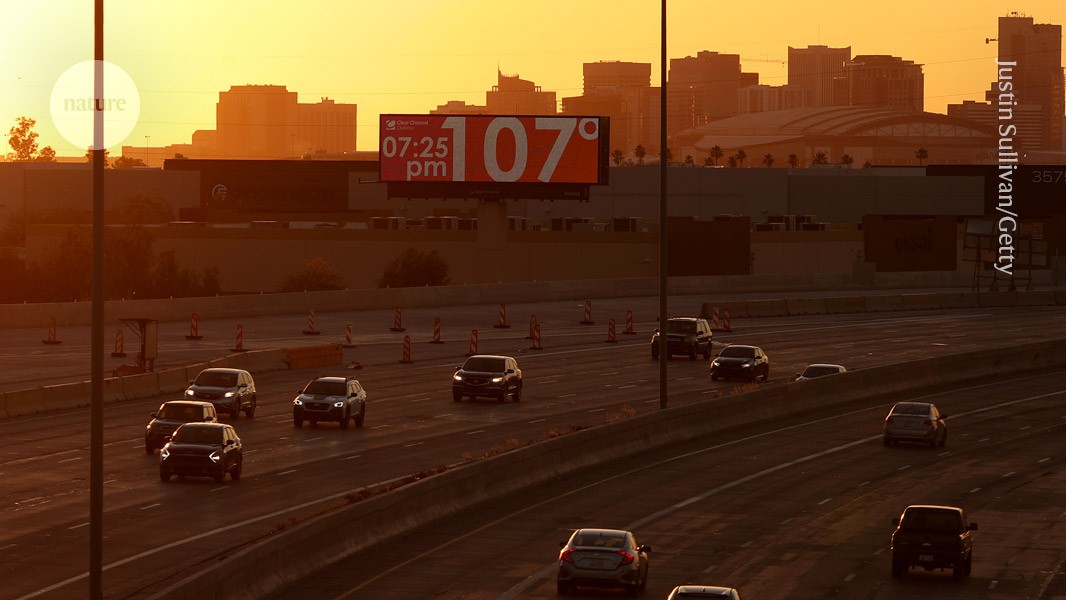The effects of scorching temperatures are exacerbated in cities, where buildings and roads soak up warmth. As Earth’s warming climate intensifies the problem, scientists are investigating evidence-based measures to make cities safer during hot periods. Researchers say that although progress has been made to address the threat, there are still obstacles to cities’ efforts to track mortality rates and implement solutions.
[…]
Cities are hotspots because of the urban ‘heat island’ effect: buildings, roads and other impervious surfaces absorb the Sun’s heat during the day and radiate warmth into the night, raising air temperatures. High night-time temperatures amplify the problem […] because the body can only withstand searing heat for short periods. Illnesses related to heat can develop slowly, when people cannot find respite for several days. That’s why the highest mortality rates occur a few days into a heatwave.
[…]
The stagnant air that accompanies a heatwave also magnifies air pollution, because ground-level ozone and particulate matter become more concentrated when the air does not circulate. Cities with high levels of air pollution, such as Los Angeles in California and Beijing in China face dismal air quality when the heat rises. This can compound the effects of heat on health.
Trees?



